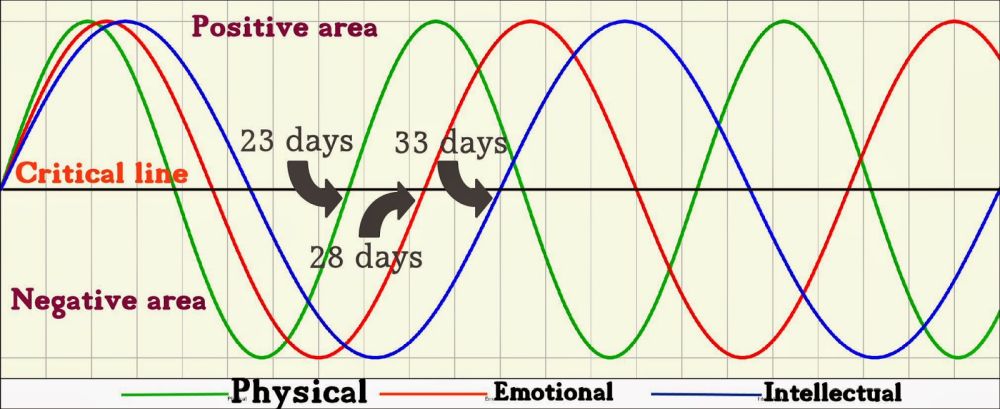Have you ever experienced days when you felt exceptionally energetic and productive, while other days seemed to drag on with a lack of motivation and focus? The concept of biorhythms suggests that these fluctuations in our physical, emotional, and intellectual states follow distinct patterns. Biorhythms propose that our lives are influenced by inherent rhythmic cycles that impact our well-being and performance. In this blog post, we delve into the intriguing world of biorhythms and explore their significance in our daily lives.

Check your BioRythms here !
Understanding Biorhythms :
Biorhythms propose that our lives are governed by three main cycles: the physical, emotional, and intellectual cycles. Each of these cycles follows a pattern, oscillating between high and low points over a specific period. The physical cycle spans 23 days, the emotional cycle covers 28 days, and the intellectual cycle lasts for 33 days. These cycles are believed to start at the moment of our birth and continue throughout our lives, affecting our moods, energy levels, and cognitive abilities.
The Physical Cycle :
The physical cycle is associated with our energy, endurance, and physical well-being. It influences our strength, coordination, and overall vitality. During the high points of this cycle, we may experience increased stamina, improved athletic performance, and enhanced physical capabilities. Conversely, the low points of this cycle may lead to fatigue, reduced immune response, and decreased physical performance.

The Emotional Cycle :
The emotional cycle is closely linked to our feelings, sensitivities, and relationships. It affects our emotional stability, intuition, and interpersonal interactions. When the emotional cycle is at its peak, we might feel more positive, empathetic, and connected to others. Conversely, during the low points of this cycle, we may experience mood swings, increased sensitivity, and emotional instability.

The Intellectual Cycle :
The intellectual cycle is associated with our mental abilities, cognitive functions, and problem-solving skills. It affects our creativity, analytical thinking, and overall mental acuity. During the high points of this cycle, we may find ourselves more alert, focused, and capable of grasping complex concepts. On the other hand, the low points of this cycle may lead to mental fatigue, decreased concentration, and difficulty in decision-making.

Applying Biorhythms in Daily Life :
While biorhythms offer an intriguing perspective on our well-being, it is important to remember that they are not definitive predictors of our experiences. However, understanding our own biorhythms can help us become more self-aware and make informed choices. By recognizing the patterns in our physical, emotional, and intellectual cycles, we can plan our activities accordingly.
For example, if you know that you are in a low point of your physical cycle, it might be wise to prioritize rest and relaxation rather than engaging in intense physical activities. Similarly, being aware of your emotional cycle can help you navigate challenging situations with greater empathy and understanding.

Conclusion :
Biorhythms provide a fascinating lens through which we can explore the rhythmic patterns within our lives. While their scientific validity remains a subject of debate, many individuals find value in monitoring and acknowledging their biorhythms. By recognizing the ebb and flow of our physical, emotional, and intellectual states, we can optimize our daily experiences and cultivate a deeper understanding of ourselves. So, let’s embrace the concept of biorhythms and embark on a journey of self-discovery and enhanced well-being.
Note : Biorhythms should not be regarded as a substitute for professional medical advice or decision-making. It is always advisable to consult with qualified healthcare professionals for personalized guidance on matters of health and well-being.


